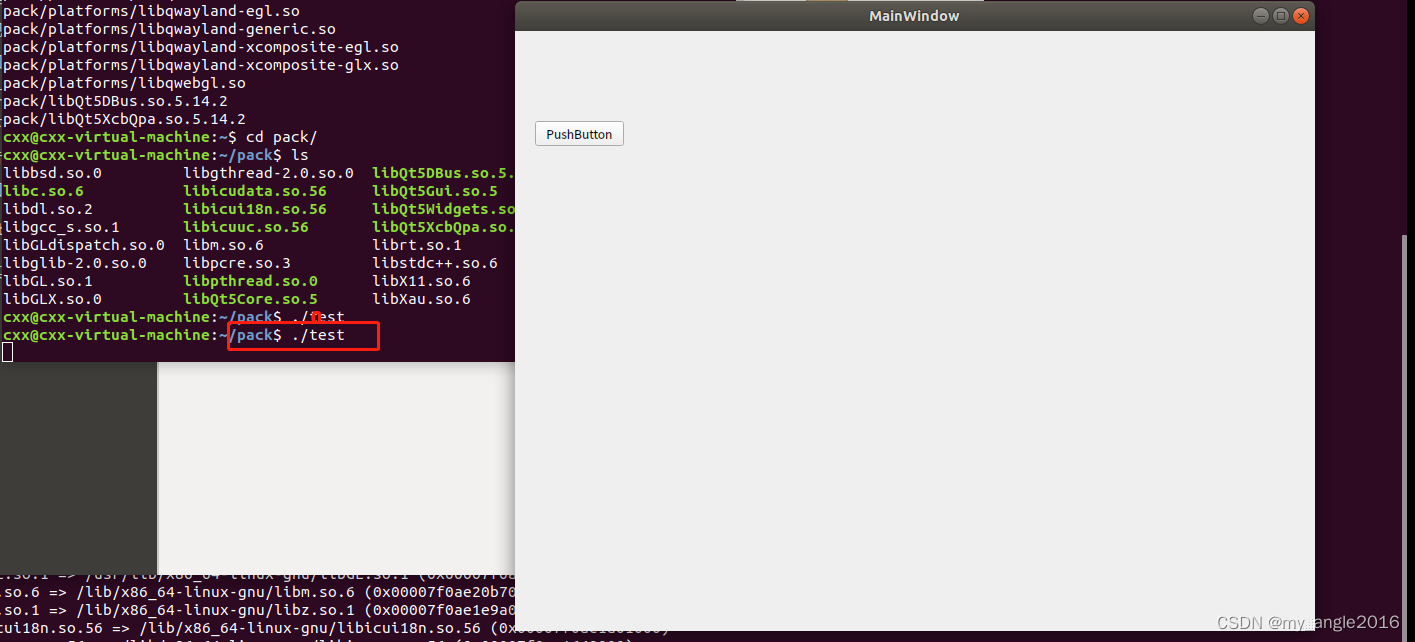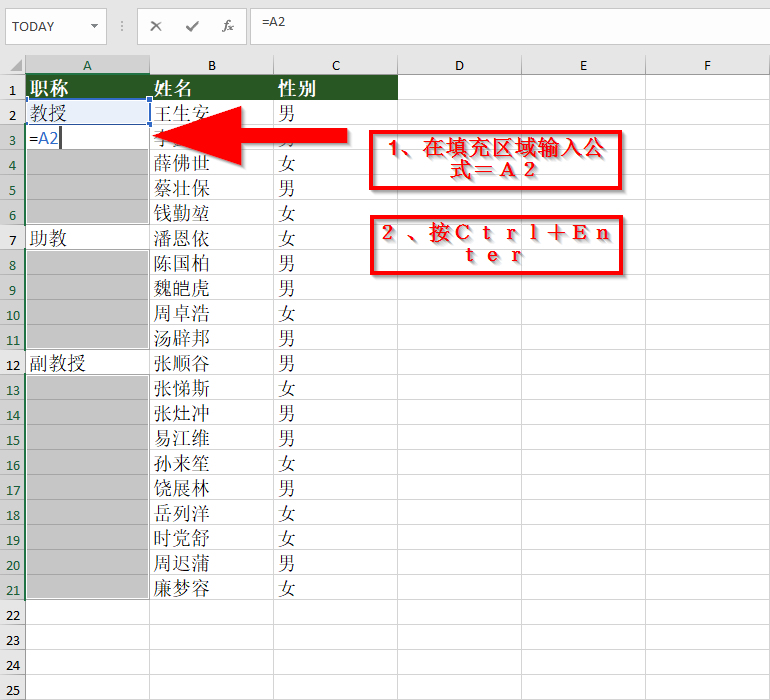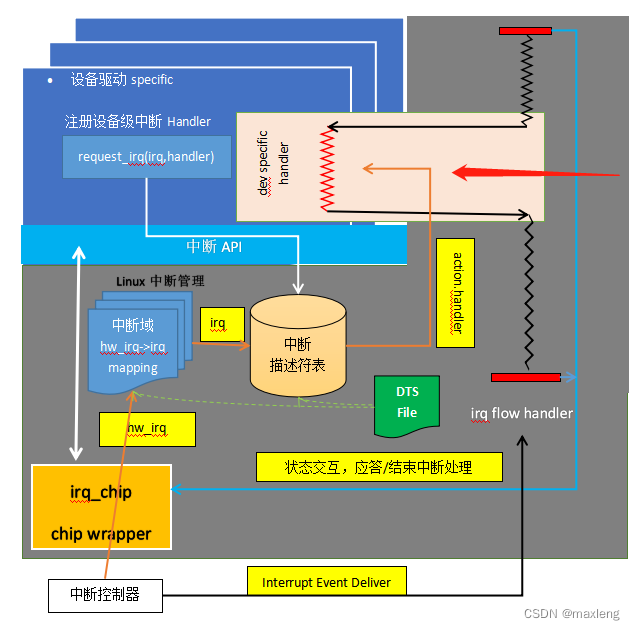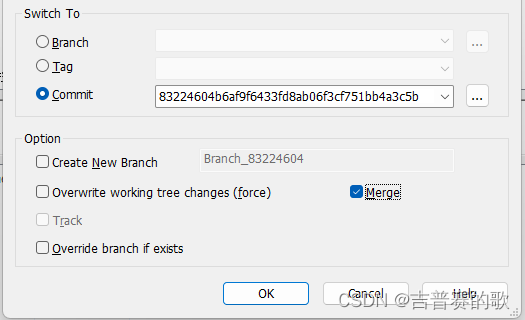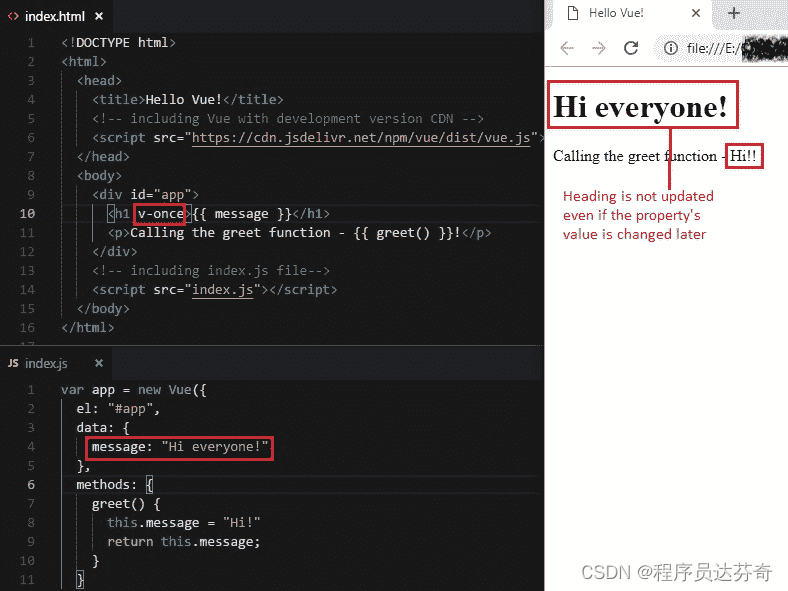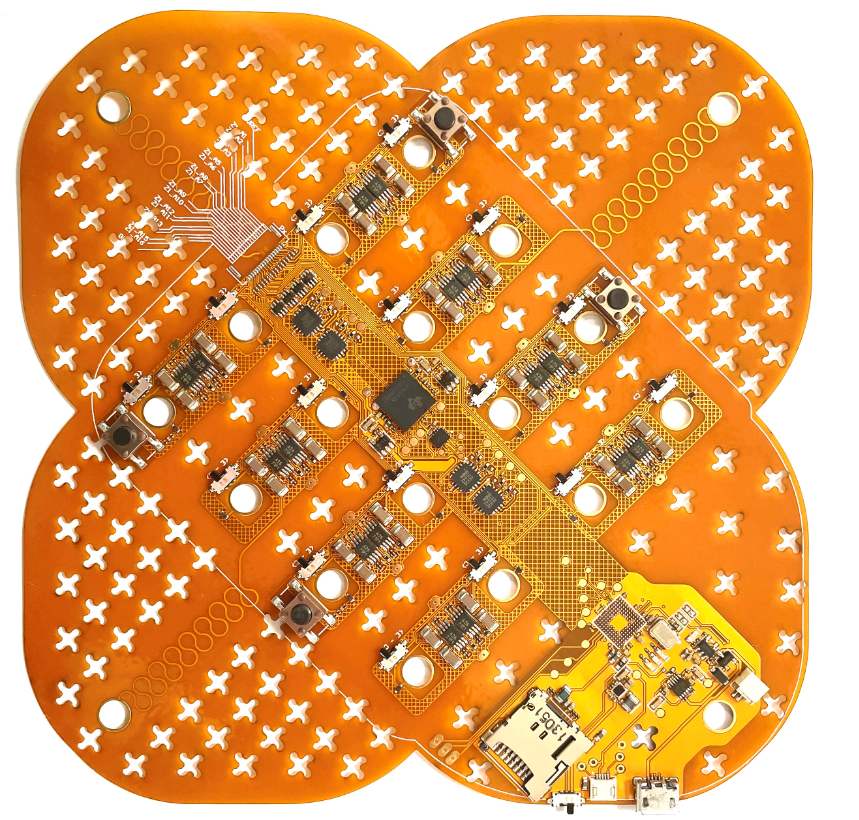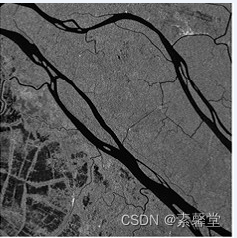题目
Qestion: 设计一个算法,判断一个未知顶点个数和边数的无向连通图G是否是棵树,假设图采用邻接表存储。若是树,返回true;否则返回 false。
(用图1和图2验证作业题2算法的正确性)
图一图二的邻接表结构
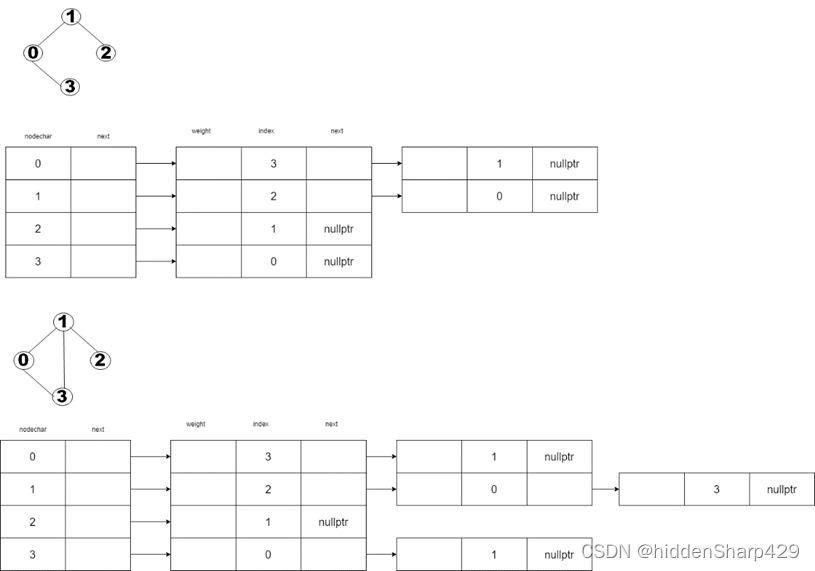
运行结果以及其解释
由结果可知图一为无向连通图,图二不为无向连通图
图一的运行结果
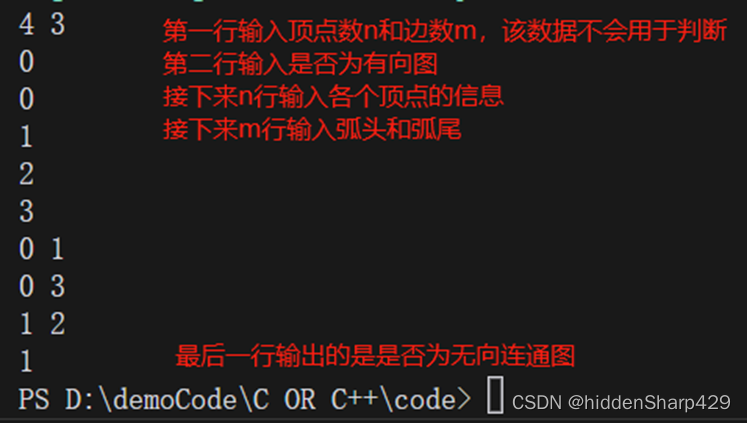
图二的运行结果
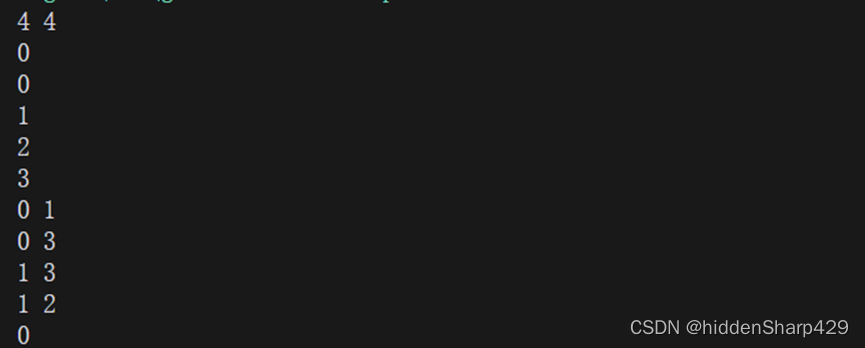
数据结构与定义
#include <stdio.h>
#include <iostream>
using namespace std;
#define MaxSize 20 // 最大顶点的个数
struct Node
{
int weight;
int index;
struct Node *next;
};
struct HNode
{
char nodeData;
struct Node *next;
};
struct Graph
{
int vertexNum;
int arcNum;
bool isDireted;
HNode verList[MaxSize];
};
主控函数
bool IsTree(Graph G){ }
bool IsTree(Graph G)
{
bool IsVisited[MaxSize]; // 记录每个顶点是否被访问过
int NodeCnt = 0; // 记录访问的顶点个数
int ArcCnt = 0; // 记录边的个数
bool IsTree = false; // 判断图G是否为树
DFS(G, G.verList[0], 0, IsVisited, NodeCnt, ArcCnt);
if ((!G.isDireted) && (ArcCnt / 2 == NodeCnt - 1)) // 因为是无向图所以边要除以2
{
IsTree = true; // 无向连通图G中恰好有n-1条边
}
return IsTree;
}
核心函数
void DFS(Graph G, HNode V, int i, bool IsVisited[], int &NodeCnt, int &ArcCnt){ }
void DFS(Graph G, HNode V, int i, bool IsVisited[], int &NodeCnt, int &ArcCnt)
{
if (!IsVisited[i])
{
IsVisited[i] = true;
NodeCnt++;
Node *tmp = V.next; // tmp指向HNode的第一个Node结点
if (tmp == nullptr) // HNode的next为空
{
DFS(G, G.verList[i + 1], i + 1, IsVisited, NodeCnt, ArcCnt);
}
else // HNode的next不为空
{
do
{
if (IsArcExist(G.verList[i].nodeData, G.verList[tmp->index].nodeData, G)) // 判断是否有该边长
{
ArcCnt++;
}
DFS(G, G.verList[tmp->index], tmp->index, IsVisited, NodeCnt, ArcCnt); // 递归到下一层
tmp = tmp->next; // tmp向后移
} while (tmp != nullptr); // 当tmp不为nullptr时一直进行DFS并且tmp后移
}
}
}
完整代码
#include <stdio.h>
#include <iostream>
using namespace std;
#define MaxSize 20 // 最大顶点的个数
struct Node
{
int weight;
int index;
struct Node *next;
};
struct HNode
{
char nodeData;
struct Node *next;
};
struct Graph
{
int vertexNum;
int arcNum;
bool isDireted;
HNode verList[MaxSize];
};
int Locate(char c, Graph G)
{
int index = -1;
for (int i = 0; i < G.vertexNum; i++)
{
if (G.verList[i].nodeData == c)
{
index = i;
}
}
return index;
}
void InsertVex(Graph &G, char v)
{
G.verList[G.vertexNum].nodeData = v;
G.verList[G.vertexNum].next = nullptr;
G.vertexNum++;
}
void InsertArc(Graph &G, char tail, char head)
{
int TailIndex, HeadIndex;
TailIndex = Locate(tail, G);
HeadIndex = Locate(head, G);
if (HeadIndex == -1 || TailIndex == -1) // 输入的弧头或者弧尾不存在
{
return;
}
// 无论G为有向图还是无向图
Node *newNode = new Node;
newNode->next = G.verList[TailIndex].next; // 头插法插入到邻接表中
newNode->index = HeadIndex;
G.verList[TailIndex].next = newNode;
if (!G.isDireted) // G为无向图
{
Node *newNode = new Node;
newNode->next = G.verList[HeadIndex].next; // 头插法插入到邻接表中
newNode->index = TailIndex;
G.verList[HeadIndex].next = newNode;
}
}
void CreateGraph(Graph &G)
{
cin >> G.vertexNum >> G.arcNum; // 输入顶点数和边数
cin >> G.isDireted; // 输入是否为有向图
if (G.vertexNum > MaxSize)
{
return;
}
// 初始化顶点列表
for (int i = 0; i < G.vertexNum; i++)
{
cin >> G.verList[i].nodeData;
G.verList[i].next = nullptr;
}
// 依次输入各边的信息
for (int j = 0; j < G.arcNum; j++)
{
char ArcHead, ArcTail;
cin >> ArcTail >> ArcHead;
InsertArc(G, ArcTail, ArcHead);
}
}
bool IsArcExist(char a, char b, Graph G)
{
int AIndex, BIndex; // 找到弧头和弧尾的数组下标
for (int i = 0; i < G.vertexNum; i++)
{
if (G.verList[i].nodeData == a)
{
AIndex = i;
continue;
}
if (G.verList[i].nodeData == b)
{
BIndex = i;
continue;
}
}
Node *tmp = G.verList[AIndex].next;
while (tmp != nullptr)
{
if (tmp->index == BIndex)
{
return true;
}
tmp = tmp->next;
}
return false;
}
void DFS(Graph G, HNode V, int i, bool IsVisited[], int &NodeCnt, int &ArcCnt)
{
if (!IsVisited[i])
{
IsVisited[i] = true;
NodeCnt++;
Node *tmp = V.next; // tmp指向HNode的第一个Node结点
if (tmp == nullptr) // HNode的next为空
{
DFS(G, G.verList[i + 1], i + 1, IsVisited, NodeCnt, ArcCnt);
}
else // HNode的next不为空
{
do
{
if (IsArcExist(G.verList[i].nodeData, G.verList[tmp->index].nodeData, G)) // 判断是否有该边长
{
ArcCnt++;
}
DFS(G, G.verList[tmp->index], tmp->index, IsVisited, NodeCnt, ArcCnt); // 递归到下一层
tmp = tmp->next; // tmp向后移
} while (tmp != nullptr); // 当tmp不为nullptr时一直进行DFS并且tmp后移
}
}
}
bool IsTree(Graph G)
{
bool IsVisited[MaxSize]; // 记录每个顶点是否被访问过
int NodeCnt = 0; // 记录访问的顶点个数
int ArcCnt = 0; // 记录边的个数
bool IsTree = false; // 判断图G是否为树
DFS(G, G.verList[0], 0, IsVisited, NodeCnt, ArcCnt);
if ((!G.isDireted) && (ArcCnt / 2 == NodeCnt - 1)) // 因为是无向图所以边要除以2
{
IsTree = true; // 无向连通图G中恰好有n-1条边
}
return IsTree;
}
int main()
{
Graph G;
CreateGraph(G);
bool res = IsTree(G);
cout << res << endl;
return 0;
}
结束语
因为是算法小菜,所以提供的方法和思路可能不是很好,请多多包涵~如果有疑问欢迎大家留言讨论,你如果觉得这篇文章对你有帮助可以给我一个免费的赞吗?我们之间的交流是我最大的动力!




